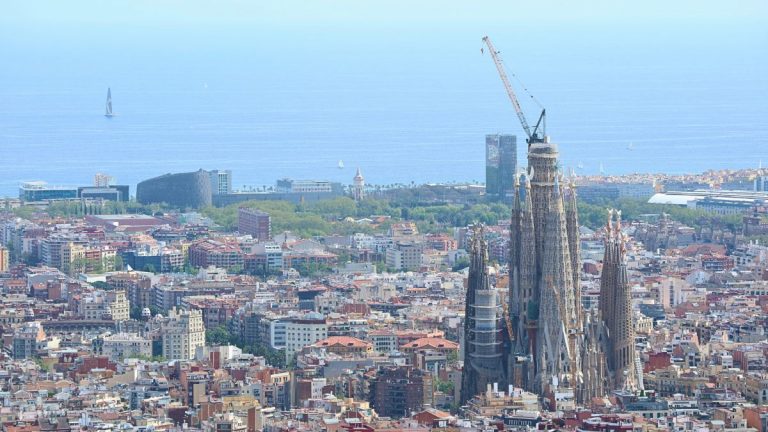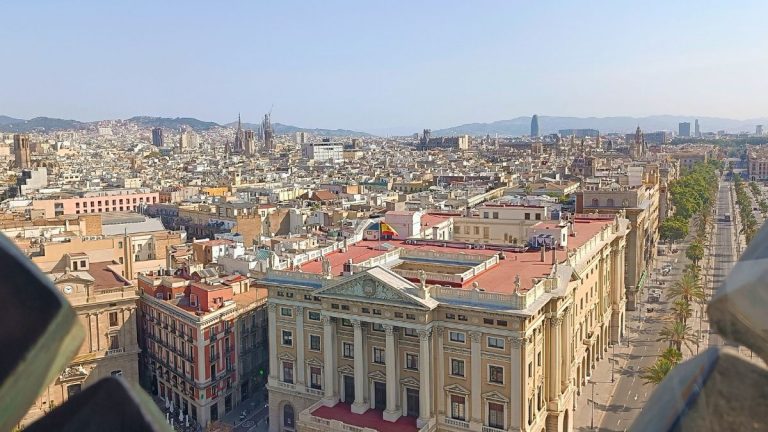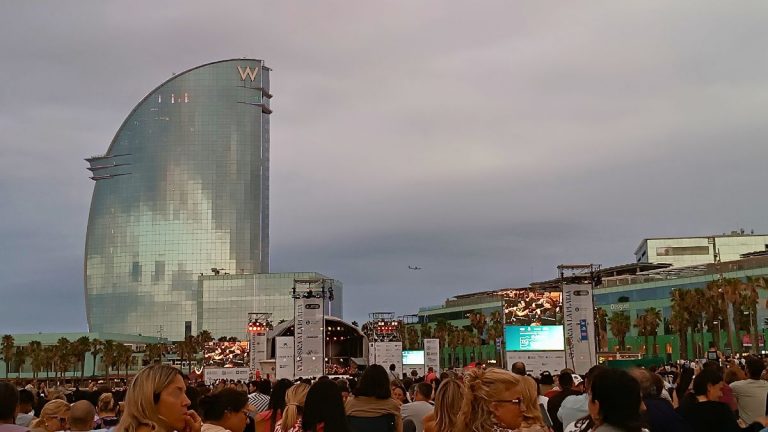25 Interesting and Fun Facts About Barcelona to Know in 2025
Barcelona is a city full of surprises, where centuries-old history meets bold modern design and Mediterranean charm.
After living here and exploring every corner, I’ve discovered fascinating stories, unusual traditions, and hidden details that most visitors never hear about.
From record-breaking landmarks and quirky architectural facts to legends that blur the line between myth and history, Barcelona will challenge your perceptions and amaze you.
Ready to discover what makes this city so unique?
Here are 25 interesting and fun facts about Barcelona you need to know in 2025.
Short on time? Here are my top Barcelona recommendations:
✨ Barcelona Card ✨ – free entrance, discounts, and transportation
✨ Catalonia Passeig de Gràcia ✨ – superb centrally located 4* hotel
Disclaimer: This page contains affiliate links. If you purchase through one of them, I may receive a small commission from the platform at no extra cost to you. Thanks for the support!
25 Fascinating Facts About Barcelona You Should Know

💡 Insider Tip: If you want to experience Barcelona without the hassle of planning, consider my custom travel itinerary service. Together, we can craft a personalized travel plan that caters to your interests. Let’s make your next Barcelona adventure magical!
Barcelona isn’t just about Gaudí, sunny beaches, and tapas. The city is full of surprising details, record-breaking landmarks, and stories that span centuries.
These fascinating Barcelona facts will give you a fresh perspective on one of Europe’s most visited cities. Let’s go!
1. Barcelona Speaks Two Official Languages

Barcelona speaks not one, but two official languages: Catalan and Spanish.
Catalan is the historical and cultural language of Catalonia, with roots in the Latin spoken during Roman times. It’s used in schools, government, street signs, and everyday conversations among locals.
Spanish, or Castilian, is spoken across Spain and is equally present in the city’s life, from business to media.
You’ll notice that most signs, menus, and public information are in both languages. Many residents switch between them effortlessly.
While English is widely understood in tourist areas, learning a few basic words in Catalan is a simple way to connect with locals and show respect for their culture. Start with bon dia (good morning) and gràcies (thank you), and you’ll make friends fast.
2. Legends Say Barcelona Predates Rome

Legends say the city predates Rome, and it’s one of the most controversial facts about Barcelona.
According to one origin story, the city was founded by the mythical Greek hero Heracles during his travels across the Mediterranean.
Another popular version credits the Carthaginian general Hamilcar Barca, father of the famous Hannibal, who is said to have named the settlement after his family.
These tales add a sense of mystery to Barcelona’s origins and are still shared in local culture. However, historical evidence tells a different story.
Archaeologists agree that while the area was inhabited long before Rome existed, the city as we know it was officially founded by the Romans in the 1st century BC under the name Barcino.
You can still see remains of Roman walls and streets in the Gothic Quarter today.
3. The Streets of the Gothic Quarter Are Over 2,000 Years Old

One of the most remarkable facts about Barcelona for history lovers is that the streets of the Gothic Quarter are over 2,000 years old.
Barri Gòtic, as locals call it, sits on the site of the original Roman settlement of Barcino. Many of its narrow lanes still follow the layout planned by Roman engineers, and you can even see original stones in parts of the old walls.
Walking through the Gothic Quarter feels like stepping back in time. Hidden among the medieval buildings are fragments of Roman columns, ancient courtyards, and quiet plazas that have witnessed centuries of change.
The mix of Roman foundations and later Gothic architecture gives the neighborhood its distinctive charm.
4. It’s the Only City Awarded the Royal Gold Medal for Architecture

One of the most unique facts about Barcelona is that it’s the only city in the world to receive the Royal Gold Medal for Architecture.
The prestigious award, given by the Royal Institute of British Architects, is usually presented to individual architects or studios. In 1999, Barcelona broke tradition when the entire city was honored.
The award recognized Barcelona’s outstanding urban design, innovative public spaces, and architectural heritage.
From Antoni Gaudí’s surreal masterpieces like Sagrada Familia and Park Güell to the elegant modernist buildings along Passeig de Gràcia, the city blends creativity with functionality.
Its transformation ahead of the 1992 Olympics also played a key role, as it revitalized neighborhoods and improved public spaces.
This recognition confirms what locals and visitors already know. Barcelona isn’t just a city with beautiful buildings. It’s a living display of world-class architecture at every turn.
5. Barcelona Is Home to 9 UNESCO World Heritage Sites

Speaking of architecture, one of the most impressive facts about Barcelona is that it boasts 9 UNESCO World Heritage Sites, and all of them are unparalleled architectural gems.
Seven of the sites are the works of the city’s most famous architect, Antoni Gaudí.
While icons such as Sagrada Familia and Park Güell attract millions of visitors each year, lesser-known treasures like the Crypt of Colònia Güell show Gaudí’s experimental genius on a smaller scale.
The other two UNESCO sites in Barcelona belong to another Catalan modernist master, Lluís Domènech i Montaner.
His Palau de la Música Catalana, a stunning concert hall filled with intricate stained glass and sculptures, and Recinte Modernista de Sant Pau, a former hospital complex that feels like a palace and an open-air art museum, are must-sees for architecture lovers.
6. Sagrada Familia Is Taking Longer to Build Than the Great Pyramid of Giza

Another fascinating fact about Barcelona is that its most famous UNESCO World Heritage Site, Sagrada Familia, has been under construction for over 140 years.
That’s longer than it took to build the Great Pyramid of Giza, which historians believe was completed in about 20 years.
Designed by Antoni Gaudí, the iconic basilica is not just a symbol of the city but also a key reason Barcelona received the Royal Gold Medal for Architecture.
Sagrada Familia blends Gothic inspiration with Gaudí’s distinctive modernist style, resulting in a building unlike any other in the world.
Construction began in 1882, and while progress has been slow due to its complexity and funding challenges, each completed section reveals extraordinary detail and innovation.
When finished, it will be the tallest church in the world, standing as a lasting reminder of Barcelona’s ambition, creativity, and dedication to architectural innovation.
💡 Tip: It’s no longer possible to buy your Sagrada Familia ticket in person. The only way to enter Barcelona’s most famous attraction is to get your ticket online!
7. Barcelona Enjoys More Than 300 Sunny Days Per Year

Among the coolest facts about Barcelona is just how sunny it is.
The city enjoys more than 300 days of sunshine each year, making it one of the sunniest urban destinations in Europe. The pleasant Mediterranean climate means you can explore its landmarks, beaches, and neighborhoods in comfort and not worry too much about the best time to visit Barcelona.
The consistent sunshine has shaped the city’s outdoor culture.
From sipping coffee on terrace cafés in the Gothic Quarter to strolling along the beach promenade, the city’s daily life often unfolds outside. It also adds to the experience of visiting its nine UNESCO World Heritage Sites, which look even more spectacular under blue skies.
8. Arc de Triomf Celebrates a Fair, Not a Military Victory

One of the lesser-known facts about Barcelona is that its Arc de Triomf wasn’t built to honor a battle or military victory.
Instead, one of the most famous historical sites in Barcelona served as the grand entrance to the 1888 World Fair.
The event showcased advances in industry, science, and culture. Therefore, the arch symbolizes progress and international cooperation rather than conquest.
Designed by Josep Vilaseca i Casanovas, the Arc stands out with its red brick construction and neo-Mudéjar style, inspired by Moorish architecture. Its detailed friezes celebrate agriculture, commerce, and the arts, reflecting the fair’s optimistic vision for the future.
Located at the top of Passeig de Lluís Companys, Arc de Triomf leads to Ciutadella Park.
It’s both a historical landmark and a vibrant public space. Its peaceful purpose and striking design make it one of the most meaningful monuments in Barcelona.
9. The City Welcomes More Tourists Annually Than Brazil and Australia

Barcelona attracts over 12 million tourists annually, which is more than the total visitors to entire countries like Brazil or Australia.
The city’s popularity comes from Barcelona’s unique mix of architectural treasures, Mediterranean beaches, world-class food, and vibrant neighborhoods.
Tourism plays a major role in the local economy, but it also presents challenges.
The authorities have introduced measures to balance the needs of residents with the influx of visitors. These include regulating short-term rentals and encouraging travel in the off-season.
10. The Iconic Eixample Grid Was Controversial When Built
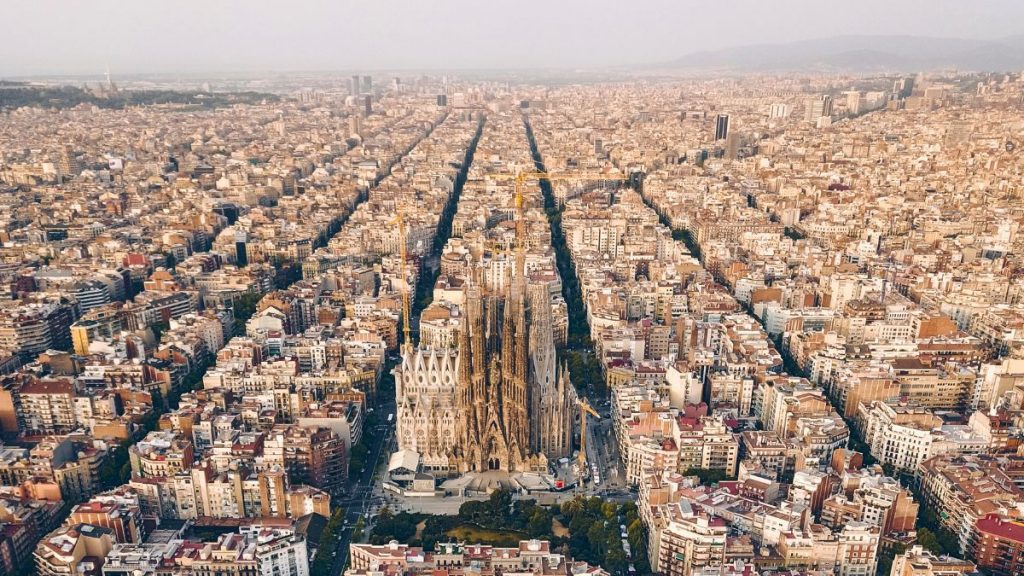
The Eixample district is one of Barcelona’s most recognizable areas, with its wide streets, chamfered corners, and perfect grid pattern.
Designed in the mid-19th century by Ildefons Cerdà, the urban plan aimed to improve traffic flow, bring in sunlight, and improve sanitation compared to the overcrowded Old Town.
Today, it’s a highlight of many Barcelona facts lists. However, when first proposed, the plan sparked a heated debate. Local authorities at the time preferred a more decorative layout and thought Cerdà’s plan was too plain and utilitarian.
Despite the resistance, construction moved forward, and Eixample became home to some of the city’s most famous Modernist buildings, including Gaudí’s Casa Batlló and Casa Milà.
Now admired for both beauty and functionality, the once-criticized grid is a symbol of forward-thinking urban planning.
11. Barcelona Inspired UNESCO’s World Book Day

Barcelona played a key role in inspiring UNESCO’s World Book Day, celebrated on April 23.
The date holds deep cultural meaning in Catalonia. Known as La Diada de Sant Jordi, or Saint George’s Day, it celebrates the autonomous community’s patron saint.
April 23 also marks the anniversary of the deaths of two literary giants, Miguel de Cervantes and William Shakespeare. The date’s cultural and symbolic weight led UNESCO to adopt it as World Book Day in 1995.
Traditionally, people exchange books and roses, filling the city’s streets with flower stands and book stalls. Among the many cool facts about Barcelona, this one is my favorite.
Sant Jordi’s Day blends romance, literature, and local identity. Many even call it the Catalan St. Valentine’s Day.
It’s one of the most fun festivals in Barcelona that you should celebrate at least once.
12. It’s the Largest City on the Mediterranean and Europe’s Busiest Cruise Port
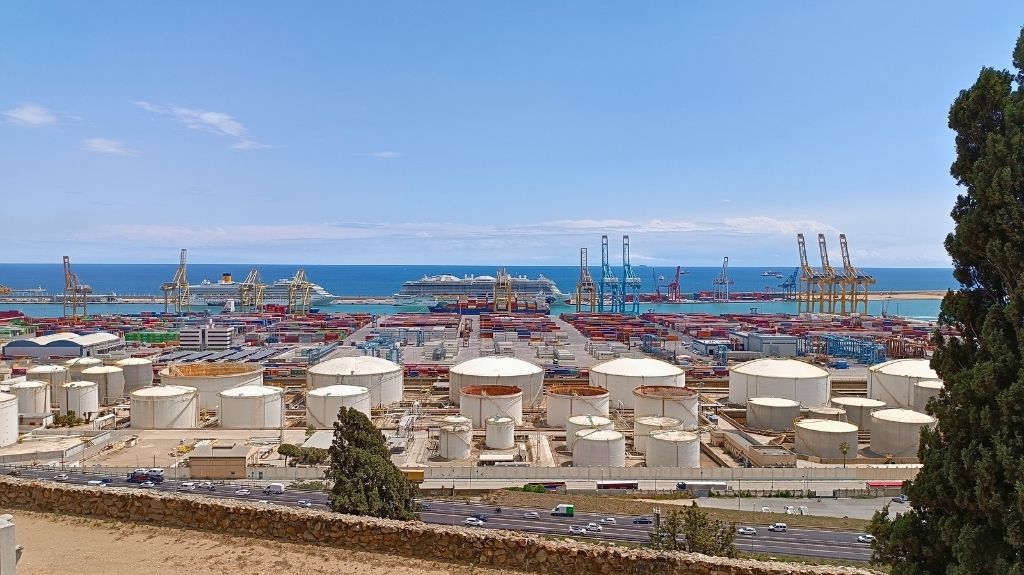
Barcelona is not only the largest city on the Mediterranean coast but also Europe’s busiest cruise port.
This Barcelona fact explains the city’s status as a major gateway for travelers, with millions arriving by sea each year.
The city’s strategic location has made it a vital hub for trade and tourism for centuries, linking Southern Europe with destinations across the Mediterranean and beyond.
Cruise ships dock just minutes from the city center. This allows you to explore many famous landmarks like La Rambla, the Gothic Quarter, and Gaudí’s masterpieces in a single day.
The port’s size and efficiency make it a preferred stop for both luxury liners and budget cruises.
Beyond tourism, the port plays a key role in Barcelona’s economy. It supports local businesses and creates jobs. Its blend of maritime heritage and modern infrastructure ensures that Barcelona remains a powerful presence on the world’s coastal and cultural map.
13. Camp Nou Can Hold More People Than the Population of Andorra
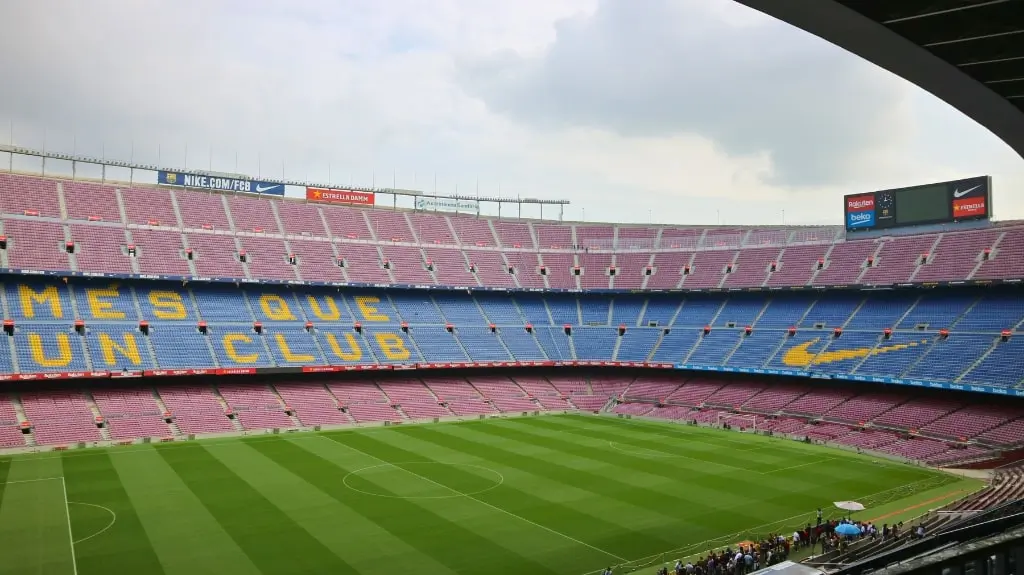
Camp Nou, home to FC Barcelona, is one of the most impressive stadiums in the world.
It’s the largest stadium in Europe and can seat over 99,000 fans, more than the entire population of Andorra. The small country between Spain and France has around 80,000 residents.
This striking comparison makes it one of the most surprising facts about Barcelona, especially for football fans.
Opened in 1957, Camp Nou has hosted countless unforgettable matches, from local derbies to Champions League finals.
It’s more than just a sports venue, though. The stadium is a symbol of Catalan pride and passion, attracting millions of visitors each year for both matches and tours.
Currently undergoing renovations, Camp Nou will soon become even larger and more modern. The renovation is expected to be completed by 2026.
14. The Famous La Rambla Is Actually Five Streets in One

La Rambla is often thought of as a single street, but one of the most surprising facts about Barcelona is that it’s actually made up of five separate streets.
Stretching 1.2 kilometers from Plaça de Catalunya to the Christopher Columbus Monument at Port Vell, each part has its own character and history.
The five streets are Rambla de Canaletes, Rambla dels Estudis, Rambla de Sant Josep, Rambla dels Caputxins, and Rambla de Santa Mònica. That’s the reason it’s sometimes referred to as Las Ramblas 😉
As you walk along, you’ll notice how the atmosphere shifts. From flower stalls and historic fountains to street performers and grand theaters, the change is clearly noticeable.
The bustling promenade has been the city’s social hub for centuries, attracting both locals and travelers. And while it’s quite touristy and overcrowded, it’s still worth a stroll.
Just make sure to follow my Barcelona safety tips and protect your valuables.
15. It’s One of Europe’s Most Bike-Friendly and Pedestrian-Friendly Cities

One of the most practical facts about Barcelona is how easy it is to explore on foot or by bike.
The city has invested heavily in wide sidewalks, pedestrian-only streets, and an ever-growing network of bike lanes that now stretches for hundreds of kilometers.
Neighborhoods like the Gothic Quarter, El Born, and Gràcia are best enjoyed at a slower pace. Walking lets you soak in the architecture, plazas, and cafés, and discover gems you’ll otherwise miss.
For longer distances, Barcelona’s bike-sharing system, Bicing, makes cycling convenient and affordable for residents. Even visitors can rent bikes from shops across the city or apps like Donkey Republic.
Major roads in Eixample and along the beachfront have dedicated bike paths. The rides are safe and fun.
Whether you’re cycling from Barceloneta to Poblenou or strolling through the old town, Barcelona’s focus on sustainable transport makes it one of Europe’s easiest cities to navigate without a car.
16. Barcelona Boasts More Bomb Shelters Than Parks
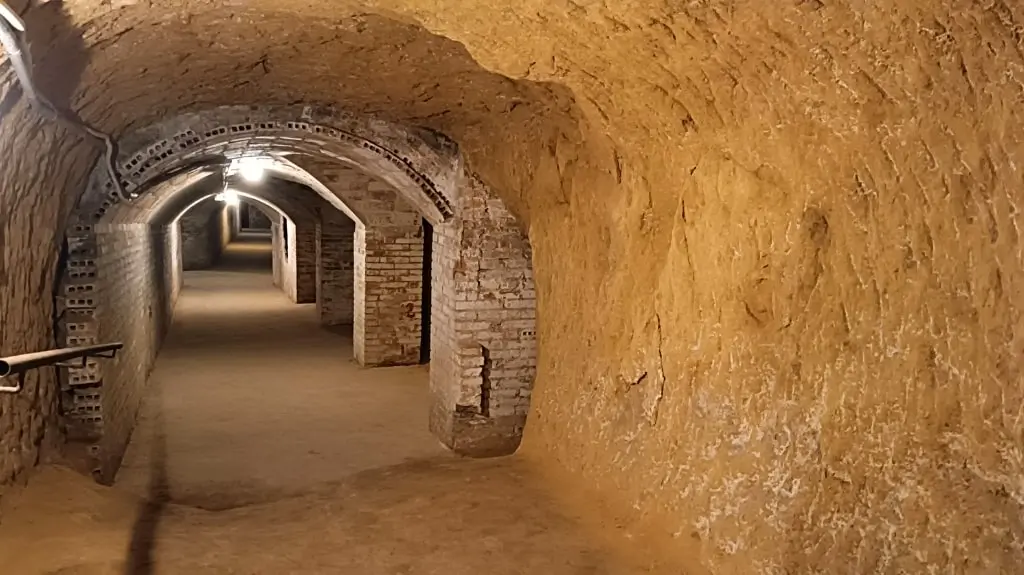
I know it’s not among the nicest facts about Barcelona, but sadly, the city has more bomb shelters than parks.
During the Spanish Civil War in the late 1930s, the city was one of the most heavily bombed in Europe. To protect its residents, over 1,400 bomb shelters were built. Many are hidden beneath streets and buildings, or even carved in the hillside of Montjuïc.
Some shelters could hold hundreds of people and were equipped with benches, ventilation systems, and medical areas.
While many remain closed, a few are open to the public. You can visit Refugi 307 in Poble-sec, one of the best Barcelona hidden gems. There, you can walk through the long tunnels carved under Montjuïc and used during air raids.
Today, Barcelona has around 90 parks, far fewer than the number of wartime shelters. These underground spaces are a reminder that the city’s beautiful plazas and lively neighborhoods also have a history shaped by resilience and survival during one of Spain’s most gruesome periods.
17. It’s One of Europe’s Most LGBT-Friendly Cities

Few cities in Europe rival Barcelona’s reputation as a welcoming destination for the LGBT community.
L’Eixample district, often called “Gaixample,” is the heart of LGBT life, filled with bars, clubs, and shops that cater to everyone.
The city also hosts major events like Pride Barcelona and Circuit Festival, which attract visitors from around the world.
Beyond nightlife, Barcelona offers inclusive beaches such as Mar Bella, where you’ll find a relaxed and open atmosphere.
The city’s progressive laws, visible support for diversity, and year-round events have earned it recognition as one of Europe’s most LGBT-friendly cities. From cultural institutions showcasing queer art to community organizations advocating for equal rights, inclusivity is part of everyday life in the city.
18. Barcelona Hosts More Than 80 Museums

Barcelona’s cultural scene is hard to beat, with more than 80 museums covering everything from fine arts to sports.
Art lovers can explore the Picasso Museum, Moco Museum, and the Museu Nacional d’Art de Catalunya (MNAC), which houses an impressive collection of Romanesque and Gothic works.
Fans of modern design will enjoy the Museu del Disseny, while history enthusiasts can step back in time at the Barcelona History Museum and its Roman ruins. Meanwhile, science lovers like me will go nuts in Cosmo Caixa and the Natural Science Museum.
Even FC Barcelona has its own museum, one of the most visited in Spain.
There are also quirky options like the Museum of Chocolate and the Museum of Wax, making museum-hopping a fun activity for all ages.
Whether you’re into science, maritime history, or contemporary art, the variety reflects the city’s creative and historic depth. Barcelona’s museums are spread across different neighborhoods, which makes them easy to include in any itinerary.
19. It Also Has Over 30 Michelin-Starred Restaurants
Gourmet lovers will find plenty to indulge in, as Barcelona is home to more than 30 Michelin-starred restaurants.
This culinary prestige ranges from high-end tasting menus to creative twists on traditional Catalan dishes.
Renowned chefs like Martín Berasategui and the Roca brothers have left their mark on the city’s dining scene. Spots such as Disfrutar and Cocina Hermanos Torres consistently rank among the best in the world.
Beyond the big names, there are smaller, intimate venues where innovation meets local flavors. They offer unique dining experiences you won’t find elsewhere.
Many of the restaurants focus on seasonal ingredients sourced from local producers, highlighting the connection between Barcelona’s gastronomy and its regional heritage.
20. The City Houses a Powerful Supercomputer Inside a Former Chapel
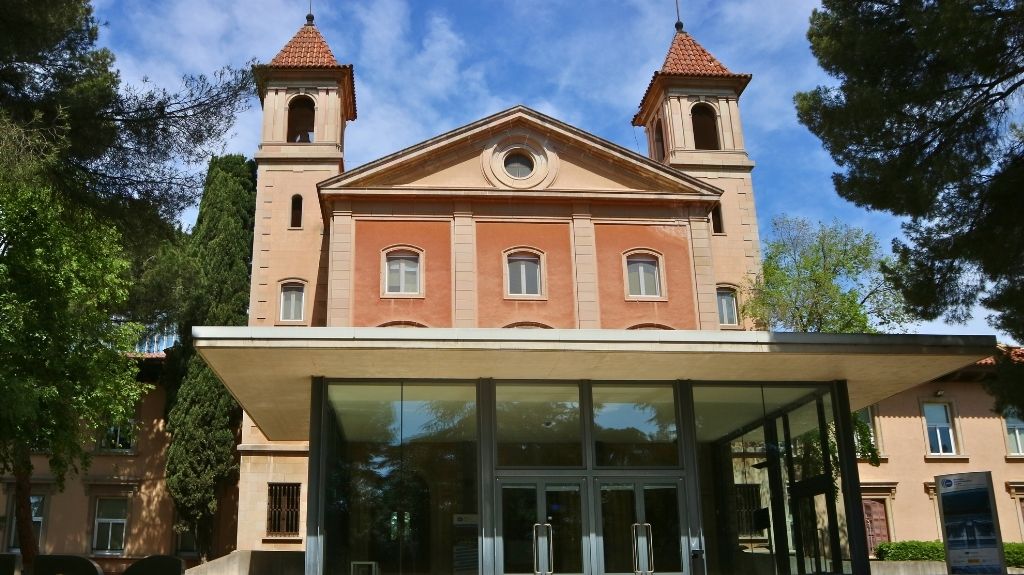
In Barcelona, cutting-edge technology meets historic architecture in an unexpected way.
The MareNostrum supercomputer, one of the most powerful in Europe, is housed inside a decommissioned 19th-century chapel on the campus of the Polytechnic University of Catalonia.
Known as the Torre Girona Chapel, the space blends stained-glass windows and high vaulted ceilings with rows of sleek, high-tech servers.
The supercomputer is used for research in fields like climate change, genetics, and astrophysics, making it a vital resource for scientists worldwide. Its unusual setting has turned it into both a technological marvel and a cultural curiosity.
The unique combination of history and innovation reflects one of the most surprising facts about Barcelona. The city might be best known for Gaudí’s masterpieces and its sunny beaches, but it also plays a key role in advancing global scientific discoveries.
21. Picasso Spent His Formative Years in Barcelona

Pablo Picasso, one of the most influential artists of the 20th century, spent several key years of his youth in Barcelona.
He moved here with his family in 1895, when he was just 13, and quickly immersed himself in the city’s thriving art scene.
Picasso studied at the prestigious Escola de Belles Arts (La Llotja) and began experimenting with styles that would later define his career. He frequented Els Quatre Gats restaurant, a hotspot for artists and intellectuals, where he showcased some of his earliest works.
Many of his formative friendships and artistic influences came from this period in Barcelona. The city was a cornerstone in his creative development.
Today, you can explore this connection at the Picasso Museum, which houses one of the most extensive collections of his early works. It’s one of the most fascinating facts about Barcelona for art lovers, revealing how the city shaped a global icon.
22. Barcelona Is the First City to Earn Biosphere World Class Destination Status
In 2011, Barcelona became the first city in the world to earn the Biosphere World Class Destination certification.
The international recognition is awarded to places that commit to sustainable tourism, responsible cultural preservation, and environmental protection.
It means Barcelona meets strict standards for reducing its ecological footprint, supporting the local economy, and preserving heritage sites for future generations. The certification also reflects efforts to make tourism benefit both residents and visitors, from eco-friendly transport options to green spaces and cultural programs.
For travelers, it’s one of the most important facts about Barcelona. It shows that the city isn’t just about stunning architecture, Mediterranean beaches, and world-class food. It’s also a leader in balancing tourism with sustainability.
23. Casa Batlló Was Designed Without a Straight Line

Casa Batlló, one of Antoni Gaudí’s most famous works, fascinates with its dreamlike façade, where you won’t find a single straight line.
Built between 1904 and 1906, the building is a masterpiece of Modernist architecture. It blends organic curves, colorful mosaics, and flowing shapes inspired by nature.
The exterior is a visual story, with balconies resembling masks and roof tiles that look like dragon scales. This design approach makes it one of the most unique architectural facts about Barcelona.
Inside, Gaudí continued the flowing lines. The staircases, windows, and even furniture avoid rigid angles.
But the lack of straight edges wasn’t just for beauty. It also improved light flow, ventilation, and comfort.
Today, Casa Batlló is a UNESCO World Heritage Site and a must-see if you enjoy exploring the city’s architectural wonders. It proves that in Barcelona, even walls and windows can dance.
24. Montjuïc’s Olympic Stadium Stood Decades Before the 1992 Games

Montjuïc’s Olympic Stadium, officially known as Estadi Olímpic Lluís Companys, has a history that stretches far beyond the 1992 Summer Olympics.
It was originally built for the 1929 International Exposition and was meant to host the People’s Olympiad in 1936. The event was canceled due to the Spanish Civil War.
For decades, the stadium sat mostly unused, becoming a quiet reminder of the dark period in the city’s history.
When Barcelona was chosen to host the 1992 Games, the stadium was renovated and modernized, transforming into the centerpiece of the Olympic complex.
The sports event not only revived the venue but also played a huge role in reshaping the city’s global image. Among the many facts about Barcelona, this one stands out as a reminder of how the past can be repurposed for the future.
Today, the stadium hosts concerts, sporting events, and cultural celebrations, keeping its long legacy alive.
25. The City Has One of the Oldest Food Markets in Europe

Barcelona is home to one of Europe’s oldest and most famous food markets, Mercat de Sant Josep de la Boqueria, commonly known as La Boqueria.
Founded in the 13th century, the bustling market has been a hub for fresh produce, seafood, meats, and local delicacies for hundreds of years.
Its lively atmosphere, colorful stalls, and wide variety of products make it a favorite spot for both locals and visitors.
But La Boqueria is more than just a market. It’s a cultural experience that reflects Barcelona’s rich culinary traditions.
To get the most of your visit, try to come early in the morning. That’s when the produce is the freshest and crowds are the thinnest.
Facts About Barcelona FAQs
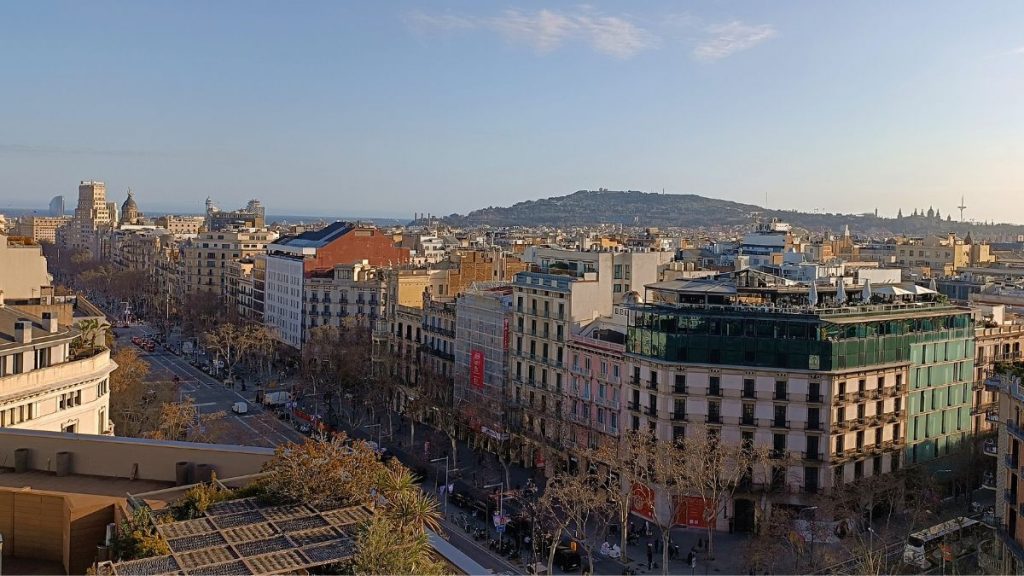
Who founded Barcelona?
Legends say it was founded by the Carthaginian general Hamilcar Barca or the mythical Greek hero Heracles, but most historians agree the Romans officially established the city as Barcino in the 1st century BC.
Why is Barcelona called Barcelona?
The name may come from Hamilcar Barca’s family name, but a more likely theory links it to the Latin Barcino, the Roman name for the settlement. Both explanations remain debated among historians.
How old is Barcelona?
Archaeological evidence shows the area was inhabited over 2,000 years ago, with the official Roman founding dating to the 1st century BC.
Now You Know the Most Interesting Facts About Barcelona
And there you have it – 25 fun and interesting facts about Barcelona to know in 2025.
From ancient legends and hidden curiosities to record-setting landmarks and groundbreaking architecture, these Barcelona facts show there’s much more to the city than its most famous sights.
Whether you’re planning your first trip or returning for another visit, keep these trivia in mind and you’ll see Barcelona in a whole new light.

💡 Insider Tip: If you want to experience Barcelona without the hassle of planning, consider my custom travel itinerary service. Together, we can craft a personalized travel plan that caters to your interests. Let’s make your next Barcelona adventure magical!


